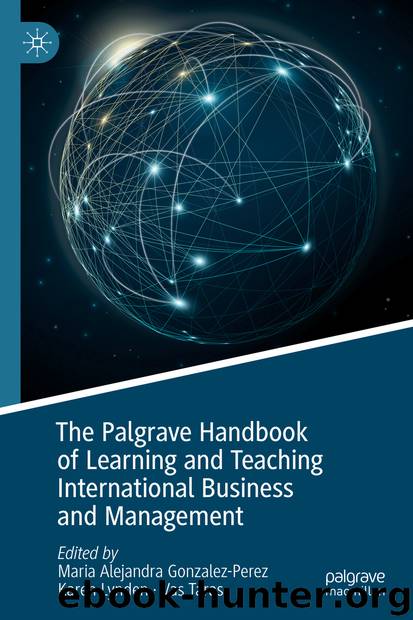The Palgrave Handbook of Learning and Teaching International Business and Management by Maria Alejandra Gonzalez-Perez & Karen Lynden & Vas Taras

Author:Maria Alejandra Gonzalez-Perez & Karen Lynden & Vas Taras
Language: eng
Format: epub
ISBN: 9783030204150
Publisher: Springer International Publishing
Objectives and Stages of the Experiential Learning Cycle
In 2014, the International Project (China) course was launched at the University of Sydney Business School for part-time Master of Business Administration (MBA) students. In 2015, the Doing Business in China course was launched for Master of Management (MMGT) students. Designed and coordinated by the authors who act as instructors, the two courses are both elective courses taught in an intensive mode in China every year in July/August for approximately two weeks. The MBA China course is limited to 24 students and the MMGT China course to 20 students each year. Having 20–24 students in the two courses ensures diversity while still allowing for a tailored learning experience and extensive experiential learning. The courses count as equivalent to a one semester course for the Master of Management students and a two-semester course for the MBA students.
Unlike some international courses that consist of visits to multiple locations to give students a wider perspective on China, experiential teaching is designed to create deep and differentiated experiential learning which takes into account different backgrounds and skill sets of our students. Experiential learning theory (ELT) defines learning as a process of knowledge creation through grasping and transforming experience (Gonzalez-Perez & Taras, 2014; Kolb, 1984). The curricular core of these in-country programs is the concrete learning through interaction with institutional and corporate stakeholders which is preceded by scaffolding teaching to guide students toward reflective observation and abstract conceptualization and further rounds of interaction with stakeholders. Each of these rounds of interaction with local counterparts is followed by further reflection and conceptualization. These cumulative experiences enable students to observe and analyze entrepreneurship in its formal and informal institutional context, its industry and market context and finally in corporate practice. To help structure external experiences, it is crucial that learning be focused. We incorporate real-life projects into the course design so that “students are thinking and so solving problems” (Wurdinger, 2005) while still involved in the experiences.
For the pre-experience Master of Management program, we introduce the institutional perspective through a combination of meetings with government and official institutions, guest lectures and reflective components, and the market/industry perspective through meetings with state-owned and private enterprises, followed by interpretative and reflective teaching (illustrated in Fig. 23.1). This process concludes with the case project that requires students to draw institutional and industry experience together in a group report analyzing China’s market environment from the perspective of an Australian firm.
Fig. 23.1Structure of the Master of Management doing business in China course
Download
This site does not store any files on its server. We only index and link to content provided by other sites. Please contact the content providers to delete copyright contents if any and email us, we'll remove relevant links or contents immediately.
| Administration | Assessment |
| Educational Psychology | Experimental Methods |
| History | Language Experience Approach |
| Philosophy & Social Aspects | Reform & Policy |
| Research |
The Art of Coaching Workbook by Elena Aguilar(48288)
Trainspotting by Irvine Welsh(20064)
Twilight of the Idols With the Antichrist and Ecce Homo by Friedrich Nietzsche(17708)
Fangirl by Rainbow Rowell(7838)
Periodization Training for Sports by Tudor Bompa(7338)
Change Your Questions, Change Your Life by Marilee Adams(6651)
This Is How You Lose Her by Junot Diaz(5784)
Grit by Angela Duckworth(4742)
Red Sparrow by Jason Matthews(4674)
Asking the Right Questions: A Guide to Critical Thinking by M. Neil Browne & Stuart M. Keeley(4584)
Paper Towns by Green John(4173)
Room 212 by Kate Stewart(4110)
Ken Follett - World without end by Ken Follett(3979)
The Sports Rules Book by Human Kinetics(3592)
Housekeeping by Marilynne Robinson(3406)
The Motorcycle Diaries by Ernesto Che Guevara(3340)
Introduction to Kinesiology by Shirl J. Hoffman(3305)
Exercise Technique Manual for Resistance Training by National Strength & Conditioning Association(3294)
Double Down (Diary of a Wimpy Kid Book 11) by Jeff Kinney(3280)
